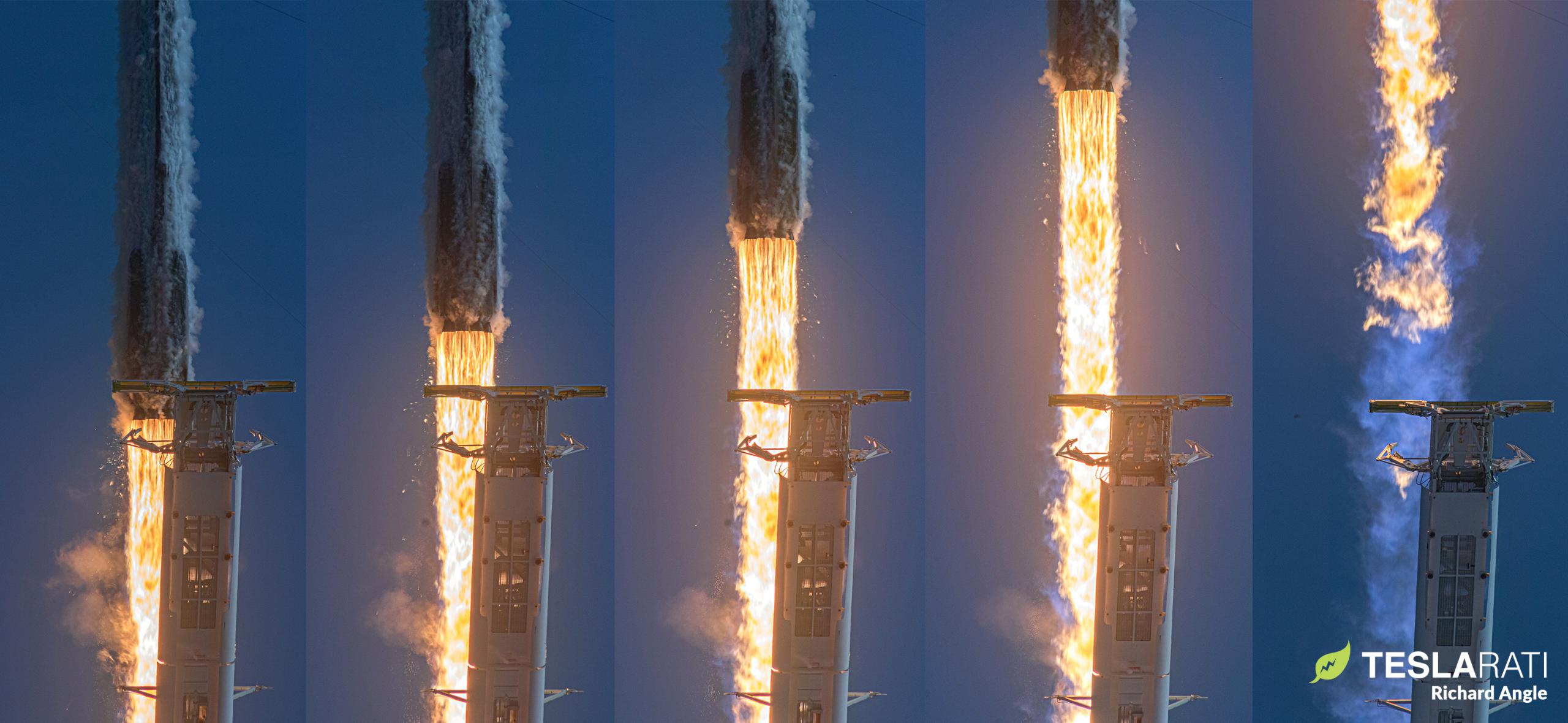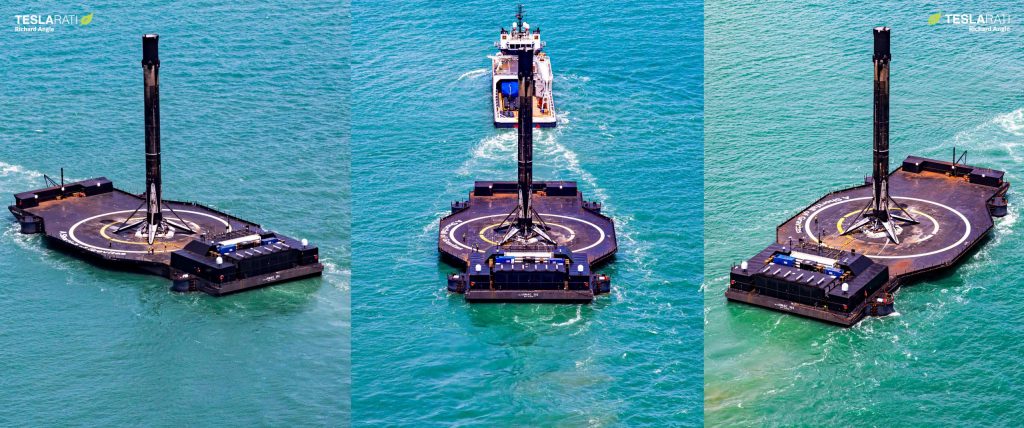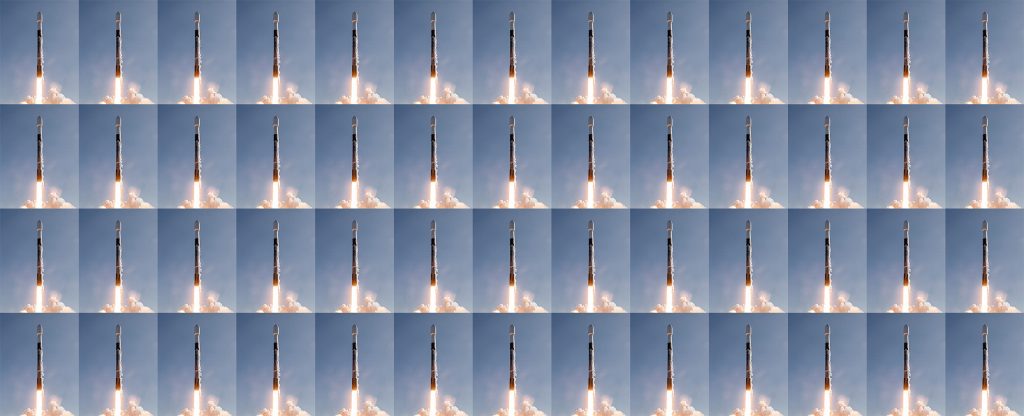

News
SpaceX targeting 100 launches in 2023
CEO Elon Musk says that SpaceX is aiming to complete up to 100 launches in 2023 while the company continues to set records in 2022.
In the history of orbital spaceflight, no family of rockets – let alone a single variant like Falcon 9 – has completed more than 61 successful launches in one calendar year. The cadence target Musk is suggesting is unprecedented and would be an extraordinary challenge even for SpaceX, a company that just completed its 50th successful Falcon 9 launch in a little over 12 months. However, it’s less impossible than it sounds.
After a few years of stagnation at a cadence of roughly 15-20 launches per year from 2017 through 2019, and an impressive doubling from 2019 to 2020 as Starlink entered its buildout phase, SpaceX effectively flipped a switch in 2021. 2020 appears to have been a sort of trial run, demonstrating that SpaceX was able to launch one Falcon 9 rocket every two weeks. At 26 launches for the year, it broke SpaceX’s previous record – 21 launches, set in 2018 – by almost 25%. But something changed in 2021.
In the first half of the year, SpaceX launched 20 times, demonstrating an unexpected 50% improvement over 2020’s annual cadence. In the second half of the year, SpaceX had two strange gaps of almost two months each, during which it didn’t once. In the other two months, though, SpaceX launched 11 times, effectively demonstrating another launch cadence improvement of more than 50% over the first half of the year. Finally, SpaceX completed 6 of those 11 launches in a period of 4 weeks near the end of the year – an annual cadence of 78 launches if sustained for a full year.
Thus far, 2022 has been an eight-month extension of the last few weeks of 2021. SpaceX even appears to have improved upon itself again, accelerating its launch cadence throughout the year. In the first half of the year, SpaceX managed 27 Falcon 9 launches, nearly beating the 31-launch record it set in 2021 in half the time and demonstrating an annual cadence of up to 54 launches per year if sustained.
Instead of continuing that already impressive pace in the second half of the year, SpaceX launched six times in July and another six times in August, sustaining an annualized cadence of 72 launches per year for two full months. At the moment, that could be considered a fluke. But if SpaceX manages another six launches in September, which is the plan, it can likely be deemed a new normal for Falcon 9 launch cadence.
From 60 to 100
To achieve 100 Falcon launches in 2023, SpaceX would need to find a way to launch an average of eight times per month, an improvement of 33% over the six-launch months the company appears to be increasingly comfortable with. Likely thanks to intentional planning and overengineering done years in advance of the payoff, SpaceX’s fleet of Falcon launch pads and recovery ships – drone ship landing platforms especially – appear to be capable of achieving that lofty cadence goal.


Assuming all three pads were able to consistently operate at their fastest demonstrated turnaround times with little to no downtime, they could theoretically support around 115 launches per year. SpaceX drone ship availability is another concern, but the current fleet of three ships can theoretically support 100 Falcon 9 landings in one year if each ship is able to recover one booster every 11 days. Of course, achieving such tight margins would require extremely inflexible scheduling and leave almost no margin for error – perhaps just a day or less per launch, on average.
Without significant upgrades, either feat would be extremely impressive on its own. Stacking those challenges, launching 100 times in 2023 would require an extraordinary effort and a good amount of luck. But it’s far from impossible. Gven the abrupt and impressive progress SpaceX has made and continues to make in 2021 and 2022, it’s also a reasonable goal: far from easy but well within reach with some moderate improvements.
Finally, Musk’s calculus may include a number of launches of SpaceX’s next-generation Starship rocket, which would make the task even more achievable for Falcon 9 and Falcon Heavy. Time will tell, and SpaceX’s activity in the last four months of 2022 will make it clear whether 2023’s 100-launch target is truly feasible.
News
Tesla launches in India with Model Y, showing pricing will be biggest challenge
Tesla finally got its Model Y launched in India, but it will surely come at a price for consumers.

Tesla has officially launched in India following years of delays, as it brought its Model Y to the market for the first time on Tuesday.
However, the launch showed that pricing is going to be its biggest challenge. The all-electric Model Y is priced significantly higher than in other major markets in which Tesla operates.
On Tuesday, Tesla’s Model Y went up for sale for 59,89,000 rupees for the Rear-Wheel Drive configuration, while the Long Range Rear-Wheel Drive was priced at 67,89,000.
This equates to $69,686 for the RWD and $78,994 for the Long Range RWD, a substantial markup compared to what these cars sell for in the United States.
🚨 Here’s the difference in price for the Tesla Model Y in the U.S. compared to India.
🚨 59,89,000 is $69,686
🚨 67,89,000 is $78,994 pic.twitter.com/7EUzyWLcED— TESLARATI (@Teslarati) July 15, 2025
Deliveries are currently scheduled for the third quarter, and it will be interesting to see how many units they can sell in the market at this price point.
The price includes tariffs and additional fees that are applied by the Indian government, which has aimed to work with foreign automakers to come to terms on lower duties that increase vehicle cost.
Tesla Model Y seen testing under wraps in India ahead of launch
There is a chance that these duties will be removed, which would create a more stable and affordable pricing model for Tesla in the future. President Trump and Indian Prime Minister Narendra Modi continue to iron out those details.
Maharashtra Chief Minister Devendra Fadnavis said to reporters outside the company’s new outlet in the region (via Reuters):
“In the future, we wish to see R&D and manufacturing done in India, and I am sure at an appropriate stage, Tesla will think about it.”
It appears to be eerily similar to the same “game of chicken” Tesla played with Indian government officials for the past few years. Tesla has always wanted to enter India, but was unable to do so due to these import duties.
India wanted Tesla to commit to building a Gigafactory in the country, but Tesla wanted to test demand first.
It seems this could be that demand test, and the duties are going to have a significant impact on what demand will actually be.
Elon Musk
Tesla ups Robotaxi fare price to another comical figure with service area expansion
Tesla upped its fare price for a Robotaxi ride from $4.20 to, you guessed it, $6.90.

Tesla has upped its fare price for the Robotaxi platform in Austin for the first time since its launch on June 22. The increase came on the same day that Tesla expanded its Service Area for the Robotaxi ride-hailing service, offering rides to a broader portion of the city.
The price is up from $4.20, a figure that many Tesla fans will find amusing, considering CEO Elon Musk has used that number, as well as ’69,’ as a light-hearted attempt at comedy over the past several years.
Musk confirmed yesterday that Tesla would up the price per ride from that $4.20 point to $6.90. Are we really surprised that is what the company decided on, as the expansion of the Service Area also took effect on Monday?
But the price is now a princely $6.90, as foretold in the prophecy 😂
— Elon Musk (@elonmusk) July 14, 2025
The Service Area expansion was also somewhat of a joke too, especially considering the shape of the new region where the driverless service can travel.
I wrote yesterday about how it might be funny, but in reality, it is more of a message to competitors that Tesla can expand in Austin wherever it wants at any time.
Tesla’s Robotaxi expansion wasn’t a joke, it was a warning to competitors
It was only a matter of time before the Robotaxi platform would subject riders to a higher, flat fee for a ride. This is primarily due to two reasons: the size of the access program is increasing, and, more importantly, the service area is expanding in size.
Tesla has already surpassed Waymo in Austin in terms of its service area, which is roughly five square miles larger. Waymo launched driverless rides to the public back in March, while Tesla’s just became available to a small group in June. Tesla has already expanded it, allowing new members to hail a ride from a driverless Model Y nearly every day.
The Robotaxi app is also becoming more robust as Tesla is adding new features with updates. It has already been updated on two occasions, with the most recent improvements being rolled out yesterday.
Tesla updates Robotaxi app with several big changes, including wider service area
News
Tesla Model Y and Model 3 dominate U.S. EV sales despite headwinds
Tesla’s two mainstream vehicles accounted for more than 40% of all EVs sold in the United States in Q2 2025.

Tesla’s Model Y and Model 3 remained the top-selling electric vehicles in the U.S. during Q2 2025, even as the broader EV market dipped 6.3% year-over-year.
The Model Y logged 86,120 units sold, followed by the Model 3 at 48,803. This means that Tesla’s two mainstream vehicles accounted for 43% of all EVs sold in the United States during the second quarter, as per data from Cox Automotive.
Tesla leads amid tax credit uncertainty and a tough first half
Tesla’s performance in Q2 is notable given a series of hurdles earlier in the year. The company temporarily paused Model Y deliveries in Q1 as it transitioned to the production of the new Model Y, and its retail presence was hit by protests and vandalism tied to political backlash against CEO Elon Musk. The fallout carried into Q2, yet Tesla’s two mass-market vehicles still outsold the next eight EVs combined.
Q2 marked just the third-ever YoY decline in quarterly EV sales, totaling 310,839 units. Electric vehicle sales, however, were still up 4.9% from Q1 and reached a record 607,089 units in the first half of 2025. Analysts also expect a surge in Q3 as buyers rush to qualify for federal EV tax credits before they expire on October 1, Cox Automotive noted in a post.
Legacy rivals gain ground, but Tesla holds its commanding lead
General Motors more than doubled its EV volume in the first half of 2025, selling over 78,000 units and boosting its EV market share to 12.9%. Chevrolet became the second-best-selling EV brand, pushing GM past Ford and Hyundai. Tesla, however, still retained a commanding 44.7% electric vehicle market share despite a 12% drop in in Q2 revenue, following a decline of almost 9% in Q1.
Incentives reached record highs in Q2, averaging 14.8% of transaction prices, roughly $8,500 per vehicle. As government support winds down, the used EV market is also gaining momentum, with over 100,000 used EVs sold in Q2.
Q2 2025 Kelley Blue Book EV Sales Report by Simon Alvarez on Scribd
-

 News3 days ago
News3 days agoTesla debuts hands-free Grok AI with update 2025.26: What you need to know
-

 Elon Musk1 week ago
Elon Musk1 week agoElon Musk confirms Grok 4 launch on July 9 with livestream event
-

 Elon Musk5 days ago
Elon Musk5 days agoxAI launches Grok 4 with new $300/month SuperGrok Heavy subscription
-

 News2 weeks ago
News2 weeks agoTesla Model 3 ranks as the safest new car in Europe for 2025, per Euro NCAP tests
-

 Elon Musk2 weeks ago
Elon Musk2 weeks agoxAI’s Memphis data center receives air permit despite community criticism
-

 News5 days ago
News5 days agoTesla begins Robotaxi certification push in Arizona: report
-

 Elon Musk2 weeks ago
Elon Musk2 weeks agoTesla scrambles after Musk sidekick exit, CEO takes over sales
-

 Elon Musk2 weeks ago
Elon Musk2 weeks agoTesla reveals it is using AI to make factories more sustainable: here’s how















